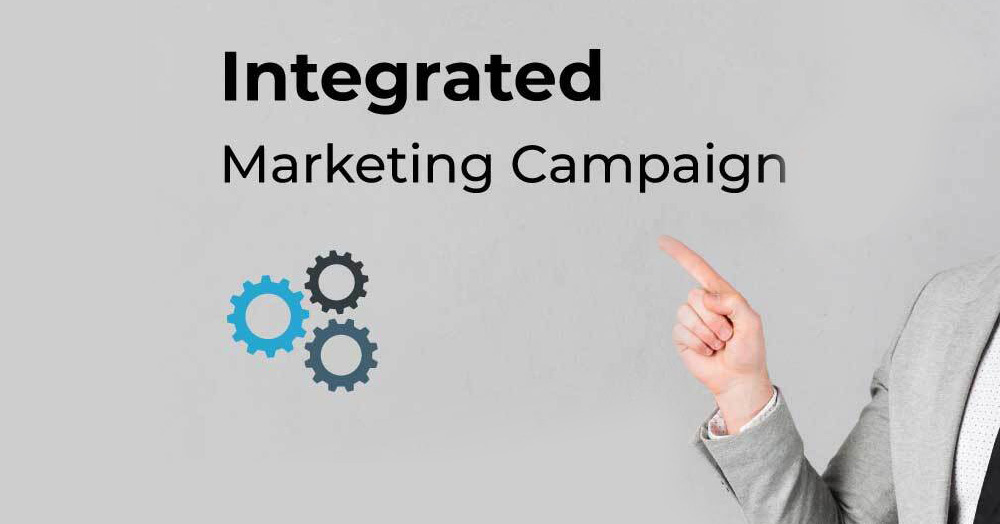What do Nike, Budweiser, and The New York Times have in common? They didn’t just run ads — they built movements across platforms. In a world where audiences are bombarded with content, the brands that win are the ones that speak with one voice across many channels.
That’s the power of integrated marketing.
By aligning your marketing team and syncing your message across every touchpoint — from social media to billboards — you can boost campaign efficiency by over 31%. That’s not just better marketing. That’s a smarter strategy.In this post, we’ll unpack 12 unforgettable integrated marketing campaigns that got it right — and the lessons you can steal for your own brand.
What Is an Integrated Marketing Campaign?
Aristotle had rightly said that the whole is more than the sum of its parts, especially when it’s done right.
This more or less describes the concept of integrated marketing.
But more than asking “What is an integrated marketing campaign?”, the question that marketers should be asking themselves is, “Can integrated marketing be done right?”
Alas, the answer to the latter is tied to the former.
So we’ll begin by first trying to define Integrated Marketing.
Integrated marketing campaign is a coordinated strategy that combines various marketing channels, such as advertising, promotions, and social media, to deliver a unified message and achieve business objectives effectively. Integrated marketing ensures brand consistency regardless of where buyers would want to connect with it.
Usually, integrated marketing involves one or a combination of the following:
- Paid media (involves direct marketing, physical advertising, internet advertising, and scheduled broadcast advertising)
- Owned media (such as on-site UX, customer service, social media, and direct messaging through mobile and email)
- Earned media (this involves traffic derived by content marketing, organic search, influencer outreach, and PR)
Why Should You Invest in an Integrated Marketing Campaign?
Consumers don’t see channels — they see brands. Whether they’re scrolling through Instagram, watching a YouTube ad, or opening an email, your message should feel unmistakably you at every touchpoint.
A business with consistent branding tends to experience up to 20% greater overall growth and 33% higher revenue compared to one that struggles with off-brand content. That’s the real power of integrated marketing: creating a unified brand experience that’s impossible to ignore.
When your team, tools, and tactics are aligned, your marketing isn’t just louder — it’s smarter, more effective, and built for long-term impact. That’s why integrated marketing isn’t optional anymore — it’s essential.
12 Unforgettable Integrated Marketing Campaign Examples
A business must target a variety of demographics across several channels to guarantee that a brand’s campaign is recognized and communicates to the right people in all the appropriate places.
Below are some of the best examples of integrated marketing campaigns that you can learn from.
Take a look!
1. Think Small by Volkswagen
The challenge at hand was to boost Volkswagen vehicle sales in the US. Even 15 years after World War II, it was still hard for Volkswagen to sell German commodities in the US market, especially since the automobile itself was considerably smaller than what the target customers were already using.
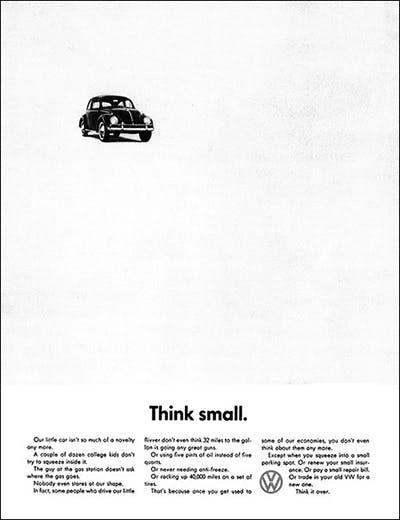
Rather than ignoring the major source of contention, the campaign accepted it and capitalized on the automobiles’ small size by encouraging its consumers to “Think Small” – the name for their campaign in 1959.
The campaign’s duration demonstrates its success since it appeared in prominent print publications and newspapers throughout the country.
After proving so effective in print, the concept was successfully adapted into TV advertisements, billboard campaigns, and even radio promotions.
Key Takeaways:
- Keep the campaign message simple
- Turn around your product’s limitations into a campaign
2. The Truth is Hard by The New York Times
The New York Times was in trouble with declining subscribers and diminishing confidence in the news. This well-known newspaper needed to find new strategies to gain universal trust.
That is when they devised the “The Truth Is Hard” campaign, one of the most effective integrated marketing campaigns, launched for the first time on 26th February 2017.
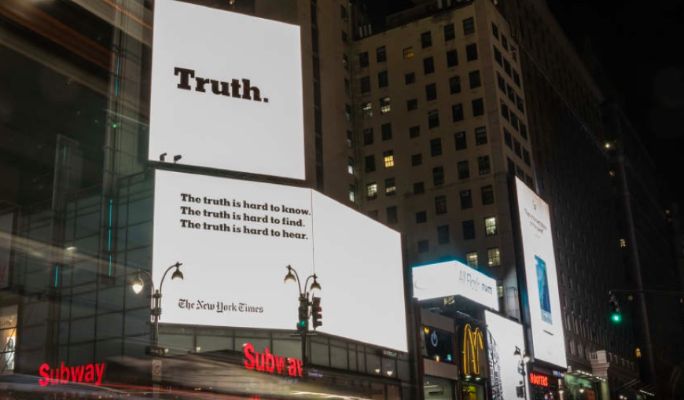
In 2018, The New York Times published a simple video demonstrating the clarity of news production in its office.
Viewers were engaged and challenged to make them consider what truth meant to them.
With the world grappling with widespread refugee crises and conflicts, the second phase of the campaign demonstrated what journalists must undergo to provide truthful news.
This content was distributed around the world after sponsored social media campaigns were launched.
As a result, subscriptions to the Times skyrocketed. Indeed, its subscription base rose by 100%, improving the public’s perception of the well-known newspaper.
Key Takeaways:
- Rake in current public sentiments for your campaign
- Synchronize the outdoor and digital campaigning
3. Wasssup by Budweiser
The Super Bowl is where television ads come to dream big. In the year 2000, “Wasssup” had the opportunity to catch the imagination of legions of football enthusiasts. And it certainly did not squander its opportunity!
The commercial depicted buddies repeating this line over and over while sipping Budweiser and enjoying a football game.
The “Wasssup,” greeting made its way into the pop culture of the time, prompting spoofs and memes. The ad was imitated by media figures such as Katie Couric and Howard Stern.

Despite the fact that the internet was still in its early phase, the brand became a pioneer by directing viewers to the website.
On the website, visitors could learn how to say “Wasssup” in over 30 different languages! With this new marketing campaign, only one phrase increased visitors to Budweiser’s website and sealed the marketing campaign’s efficacy.
Key Takeaways:
- Strike a buzzword that your audience can relate to
- Deliver what your audience wants from your brand
4. This is Wells by Wells Fargo
Wells Fargo is a financial services behemoth and the third-largest bank in the world. Despite the fact that it had been plagued by claims of fraud, the firm looked towards integrated marketing as well as rebranding initiatives to regain the confidence of its stakeholders and consumers in 2017.
Wells Fargo used its integrated marketing platforms to create a well-optimized campaign to appeal to its target demographic.
All effective marketing approaches emphasized the intersection of human sentiments combined with cutting-edge technology, which was critical to changing Wells Fargo’s overall customer experience.
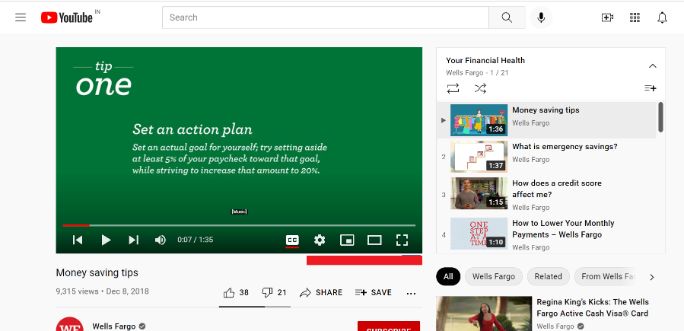
Take, for instance, the playlists curated by Wells Fargo to promote and familiarize their customers with their financial services.
These videos were specially designed to not only establish Wells Fargo’s credentials as a reputed bank but also to dispense important financial information to its customers.
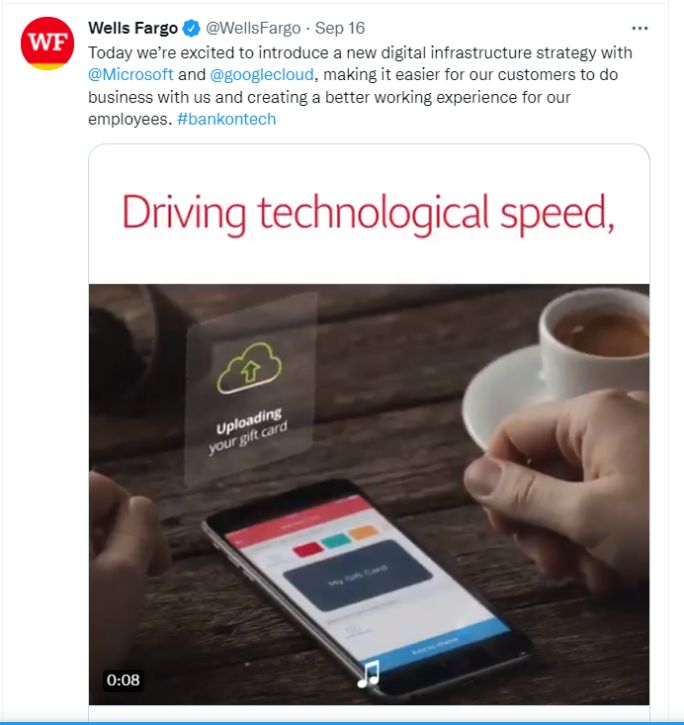
Key Takeaways
- When handling negative customer feedback, design a campaign showing an acknowledgment of past mistakes and the steps taken for course correction
- Impart valuable information of digestible viewability, if possible
5. Get a Mac by Apple
This series of commercials that debuted in 2006 featured humorous characters, each representing the two computer manufacturers (PC Vs. Apple). The goal was to persuade consumers to shift away from a PC, to a Mac, an upcoming competition.
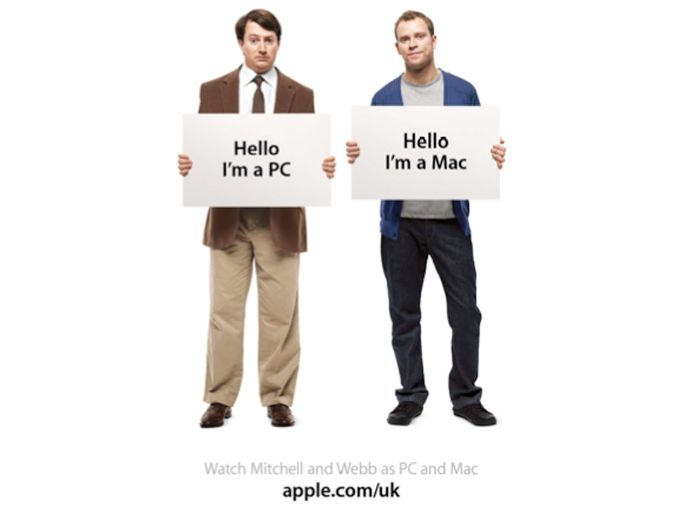
The advertisement format was comically aggressive but also lighthearted and humorous. Furthermore, Apple portrayed itself as the good guy, always encouraging PC to relax a bit.
Key Takeaways
- Focus on the experience; product features can follow later
- Minimize straightforward messaging, and create as much enigma as possible
- Prioritize visual storytelling
6. Breaking2 by Nike
Nike live-streamed their marathon in under 2 hours as part of their marketing campaign for their new product – the Zoom Vaporfly Elite in 2017. It was aired live on Twitter and Facebook, as behind-the-scenes images were posted on Instagram.
They recruited three athletes – Zersenay Tadese, Eliud Kipchoge, and Lelisa Desisa – for the race, made it simple for fans to track with their hashtag #Breaking2, and even developed a unique Nike shoe emoji.

While sprinting is undeniably appealing to Nike’s core sports demographic, the campaign’s theme of unleashing a yet unachieved human potential resonated with a far larger audience. Countless were motivated by confronting the status quo, stretching human potential to its limits, and providing anybody with internet access a literal front row ticket to the thrilling race.
Key Takeaways:
- Adopt boldness and endeavor to push boundaries
- Ensure the maximum possible exposure within the limits of the budget
Inspired by Nike’s cross-platform storytelling? You can start building your own social presence with tools like SocialPilot. A quick and effective way to find relevant, high-performing hashtags that boost your reach across Instagram, LinkedIn, and more.
Free AI Facebook Hashtag Generator
Supercharge your Facebook posts with the perfect hashtags using SocialPilot’s AI-powered Facebook Hashtag Generator.
Here is the Generated Result
7. Transfarency by Southwest Airlines
Southwest Airlines’ brand messaging has always talked about its low fares while delivering great customer value. However, that overarching brand message had become increasingly harder to maintain with the evolution of rival airlines competing.
To counter that, Southwest unveiled its new “Transfarency” campaign in 2015 to reiterate its traditional claim of being the greatest bargain in the sky.
The campaign communicates its value proposition across television, print, radio, and digital platforms.
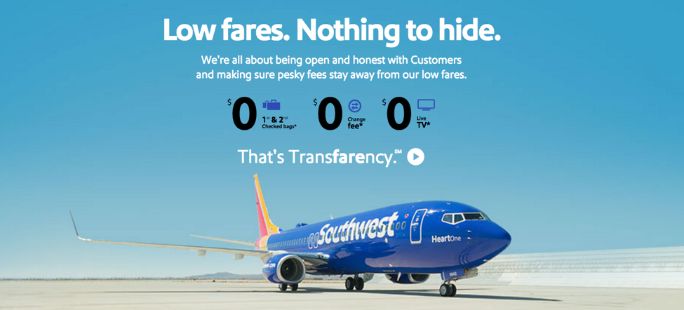
This campaign was devised by Austin’s GSD&M advertising agency, where it even went on to create a special “minisite” for comparing the fares of Southwest Airlines as compared to those of its rivals.
Key Takeaways:
- Create appeal through value proposition
- Be customer-centric throughout the campaign
- Feature the organization’s real employees to send the message further home
8. Go Places by Heineken
In 2016, Heineken launched its inaugural “Go Places” campaign with the goal of emphasizing the firm’s distinct culture and perspective to potential workers.
The initial marketing initiative invited people to participate in an engaging interview – a type where the participants could “choose their own adventure,” with the outcome being their professional strengths.
After completing the interactive quiz, participants were handed over their findings and urged to use their LinkedIn profile for applying to jobs.
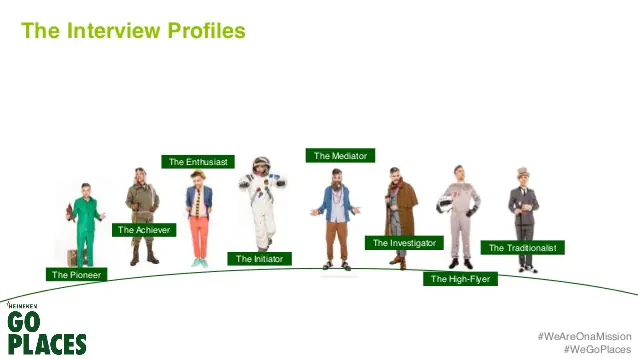
Key Takeaways:
- Create a personalized audience experience
- Interactive integrated marketing campaigns are the future of marketing
- Employ real use cases wherever possible
9. Be more dog by O2
This diverse campaign released in 2013 included outdoor and digital applications, such as geo-specific mobile advertising, in addition to television and theatrical releases.
The O2 priority app is a marketing strategy in and of itself, allowing customers to purchase exclusive experiences and tickets before anybody else.
O2’s integrated marketing strategy is so brilliant that it not only attracts customers with its quirky nature but also provides them with a bit extra in the shape of prioritization.
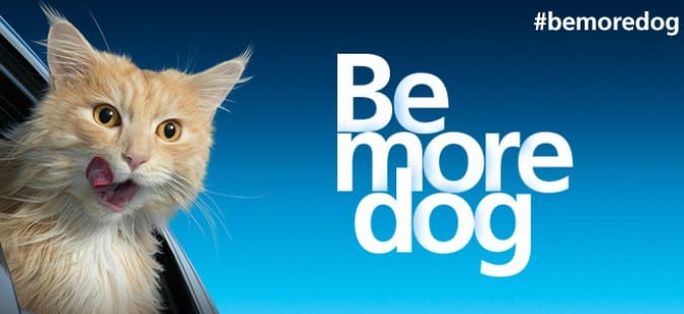
Key Takeaways:
- Use humor and quirk for effective campaigns
- Leverage the product’s features to provide a sense of exclusivity
10. On the Road by Waze
Waze used their data to create a sponsored marketing campaign in partnership with the New York Times in 2017.
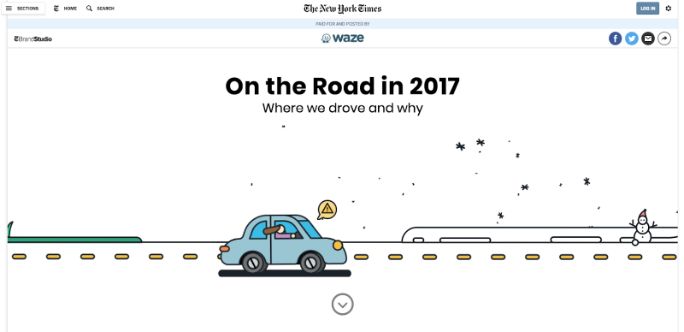
The data revealed fascinating patterns about how we drive, what we drive, and where we drive. The business incorporated quiz functions to evaluate the reader’s knowledge of driving patterns, which makes this campaign even more interactive.
Key Takeaways:
- Collate market research with personalized results to drive individual value home
- Crowdsourcing can reap amazing benefits
- Collaborate with big brands to maximize the scope of marketing
11. Chicago’s Field Museum Campaign
Brands may be both culturally as well as commercially significant, as demonstrated by the Field Museum’s integrated marketing approach that connected people with the world of art in order to promote their specialized exhibit attendance in 2018.
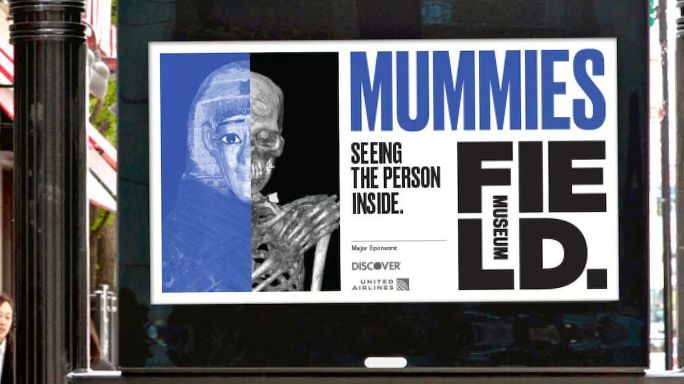
Paid digital media along with traditional advertising (like outdoor billboards) were used with social media posts declaring surprise “pop-up” art locations.
Furthermore, several videos were recorded of people interacting with the exhibits. All of this created a holistic marketing experience that made onlookers desirous of visiting the museum to satiate their cultural appetite.
Key Takeaways:
- Prioritize interactivity and creativity in your campaigns
- Try to garner engagements through smartphone and out-of-home campaigns
12. House of Innovation by Nike
Nike produced a mixed-media artwork product that was displayed in the midst of their main store in New York City in 2019. The artwork depicts historic sporting incidents created by sports persons using Nike.
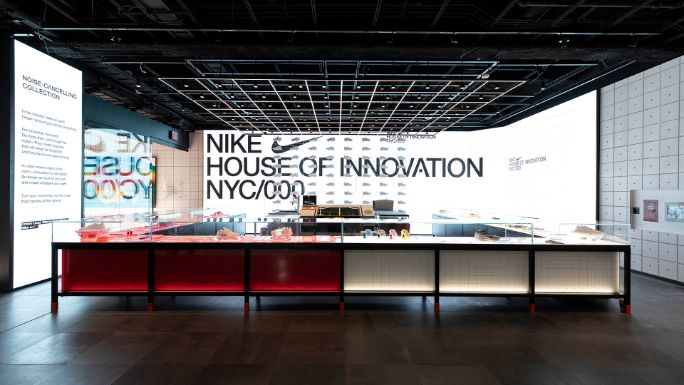
It connects the worlds of branding, art, marketing, and technology. Furthermore, the entire flagship store provides a completely unique shopping experience for customers.
People may create their own footwear, and there is a floor dedicated to customized garments, where customers can alter colors and emblems and even switch out fabrics and mix two separate items of clothing to formulate a completely new personalized product for themselves.
Key Takeaways:
- Sometimes tangible, real-life objects themselves can be great marketing tools
- Make the most of your chosen platform to drive home the message
When your campaign drives real engagement — whether in-store or online — staying responsive across channels becomes essential.
With SocialPilot’s Social Inbox, you can manage comments, messages, and mentions from multiple platforms in one place, helping your brand stay personal, responsive, and consistent at scale.
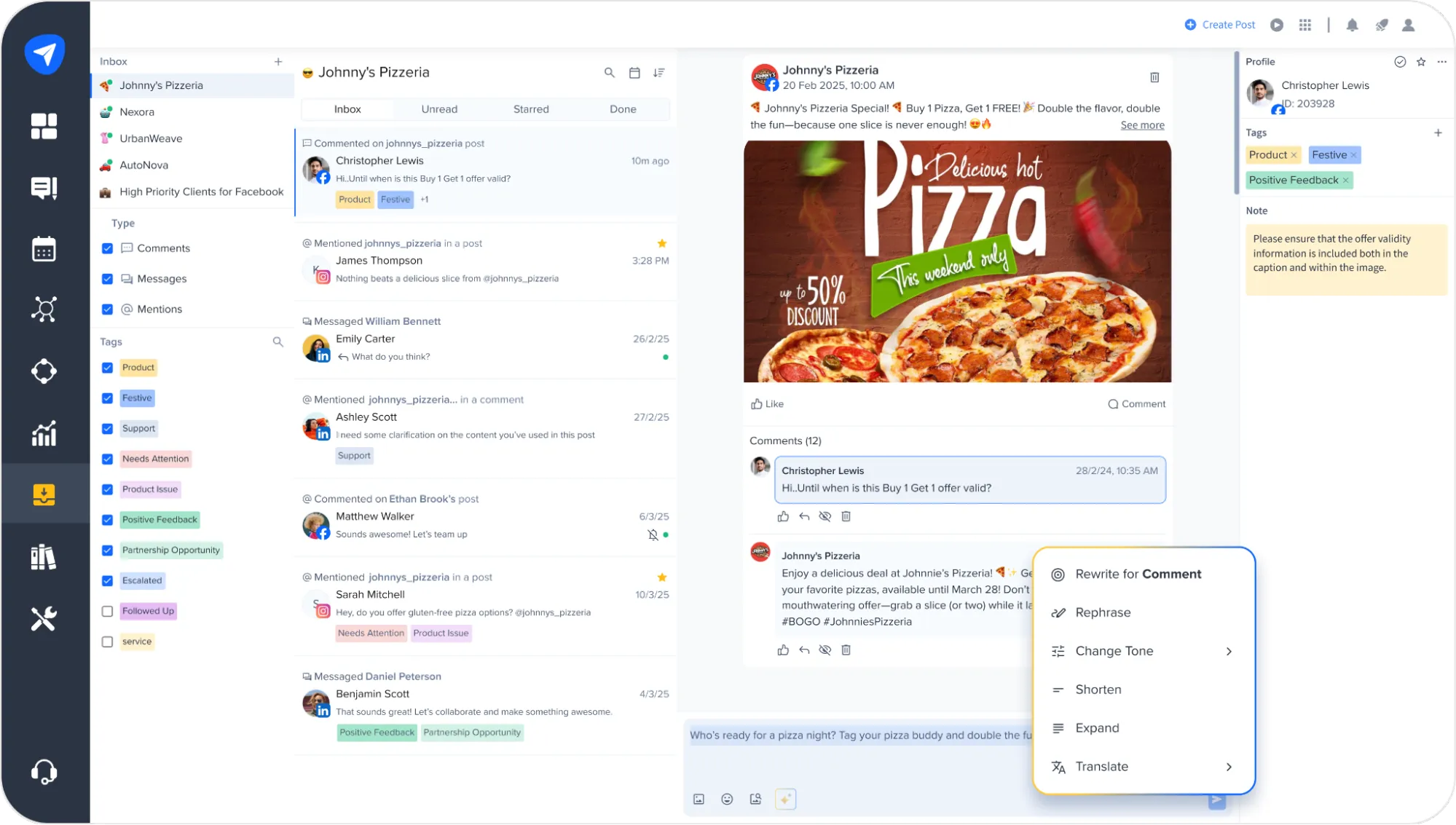
Lastly…
As more and more brands come into the picture. Brand recognition may diminish unless a consistent and coherent message is in place.
So using integrated marketing campaigns can help you deliver a consistent message across various channels, leading to increased brand awareness and revenue, as demonstrated by these 12 brand examples.
